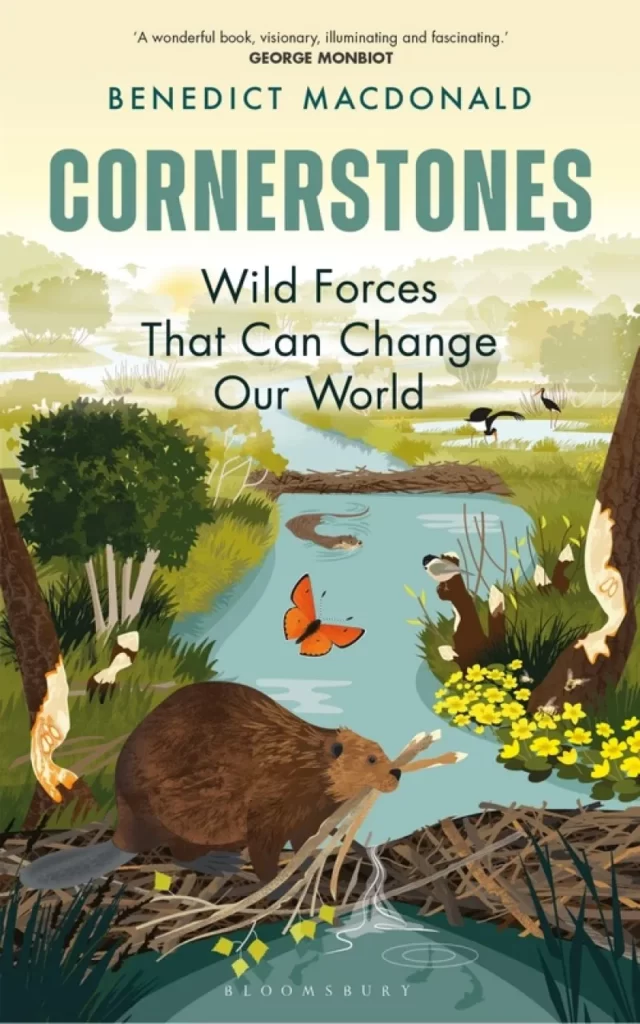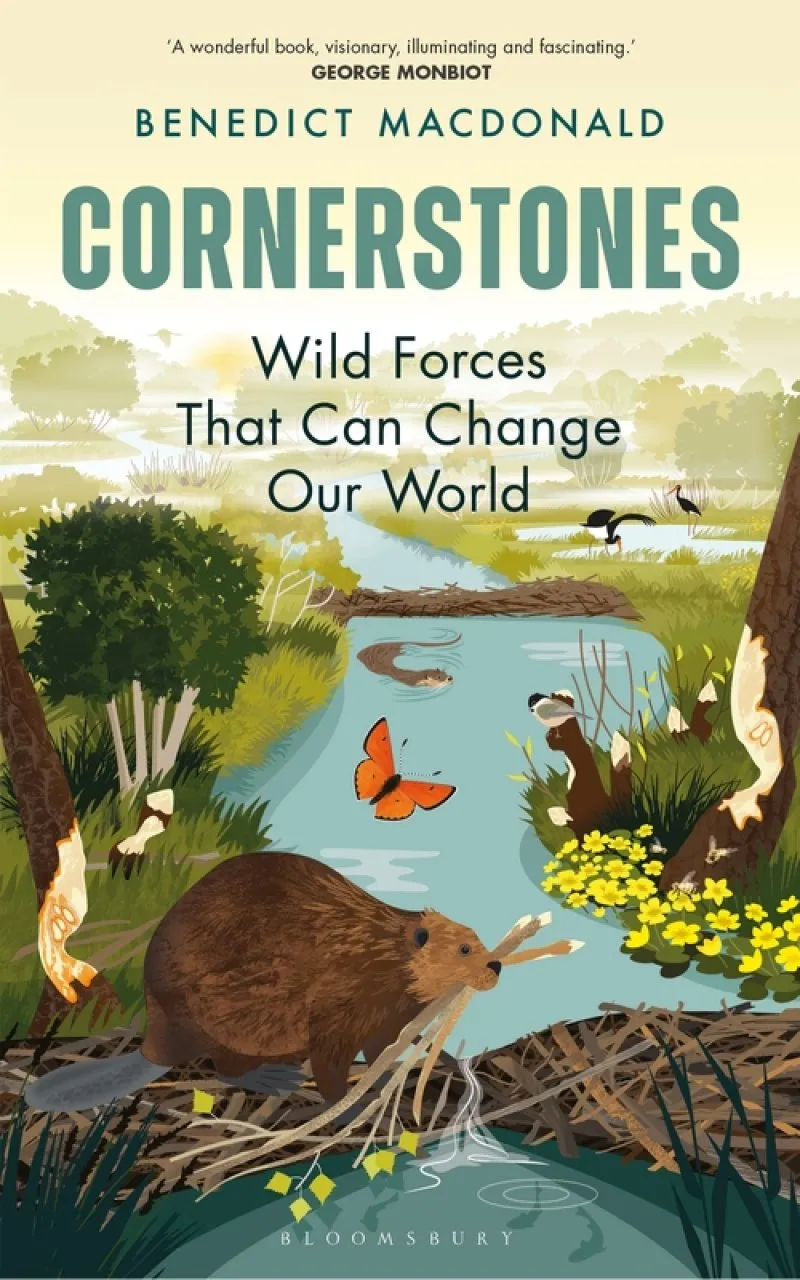View this book on the NHBS website
Benedict Macdonald, author of the eye-opening and influential Rebirding (see BW 31: 154), is passionate about restoring wildlife at scale by allowing natural processes a freer hand; first and foremost, then, his new book is aimed at building support for this approach to conservation.
The approach of picking nine ‘cornerstone’ species (or groups of species) works well. The chosen few have a disproportionate influence on their environment. And they lead us neatly into all our major landscape types and the complicated webs of connection between the animals and plants that live there. As expected, much of the focus is on candidates for reintroduction or animals that have already regained a foothold here through human intervention.
The author’s great strength is in painting vivid pictures, helping us to imagine a possible future where we have more self-willed, wilder land. The Goshawk is the ‘red-eyed woodland fury’, while Wild Boar will turn ‘drab uniformity into serrated chaos’. On every page the links and connections between different species are emphasised. The return of the great whales will help to grow more Puffins (and we should, he believes, consider importing the especially useful, shallow-water-dwelling Grey Whale from the Pacific to that end). Bringing back Wolves and Lynx will benefit ground-nesting birds and Hedgehogs by reducing their main predators, and they will also help vegetation to regenerate naturally by keeping deer on their toes.
If there is a weakness it is that we are expected to take a lot on trust. Few references are cited, and the book skips rapidly from one assertion to the next without dwelling on the evidence behind them. For the species I know best, the examples did not always ring true. The benefits that will stem from Beavers, for example, push at the boundary of believability and arguably hop across to the other side. In all, 32 birds are mentioned as Beaver beneficiaries, including Curlew, Nightingale, Tree Sparrow and Corn Bunting; while Weasels, Slow Worms, Adders and Natterjack Toads will also supposedly receive a boost. Are Hawfinches really an important disperser of wild cherries? Are Magpies a serious problem for breeding waders and, in any case, can we really expect Goshawks measurably to reduce their numbers?
There are risks in overstretching. Readers may start to question other aspects of the book for which they have less knowledge. I found myself doing just that at times. True, this is one person’s view of what a wilder future might look like, and it is a popular account rather than an academic treatise; perhaps, then, a little poetic licence is understandable. But, as the author reminds us, overblown claims by influential landowners are the bane of those seeking to move forward with contentious species reintroductions.
The final three chapters were, for me, the most compelling and thought-provoking. The discussion of trees includes the most convincing and accessible account I have read as to why self-willed regeneration is preferable to planting. Here, at least, I found myself swept along by enthusiasm rather than fretting too much about the detail. Lynx and Wolves get their own excellent chapter before we finish with humans, ‘the greatest cornerstone species of them all’. Scale is everything, he argues. We need to set aside bigger areas, worry less about micro-managing for individual species, and delegate more to animals that are better than us at creating habitat mosaics rich in wildlife. But we shall also be a big part of the story, deploying technology to the full (shock-collars for Wolves anyone?), restoring lost species and maximising the many benefits for humans of the newly restored land. It is quite a vision.

